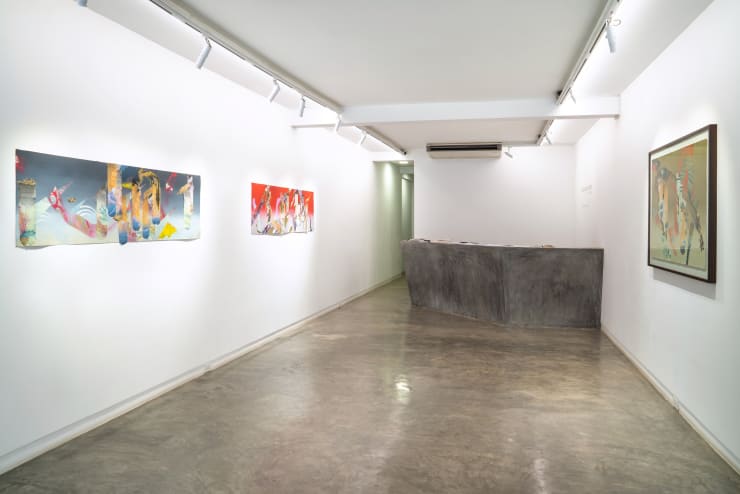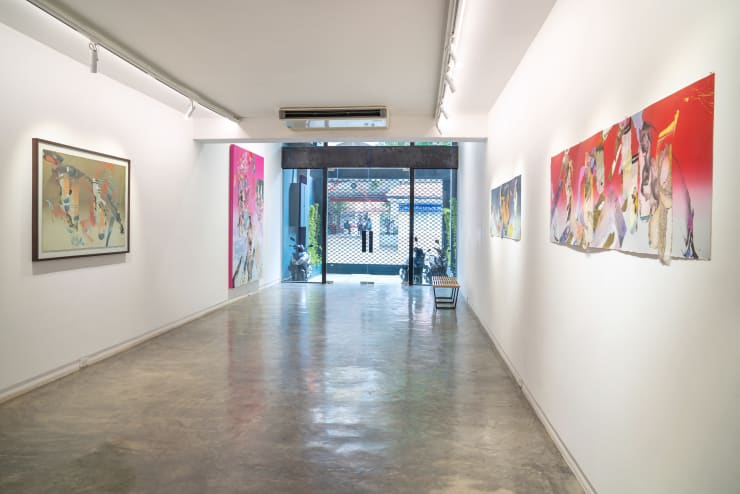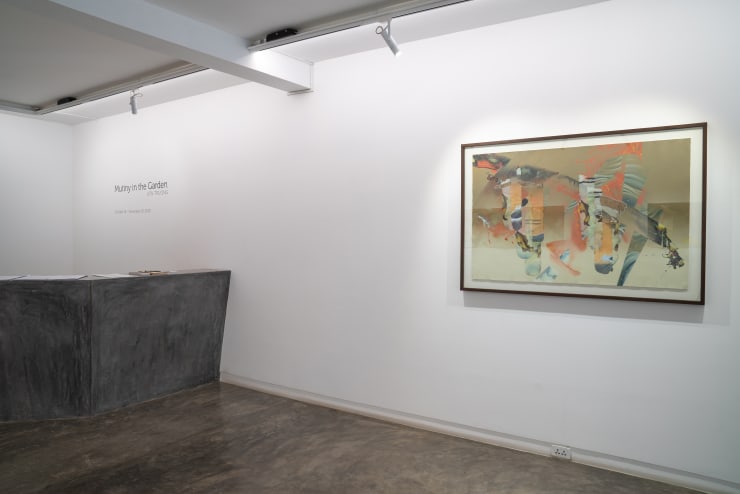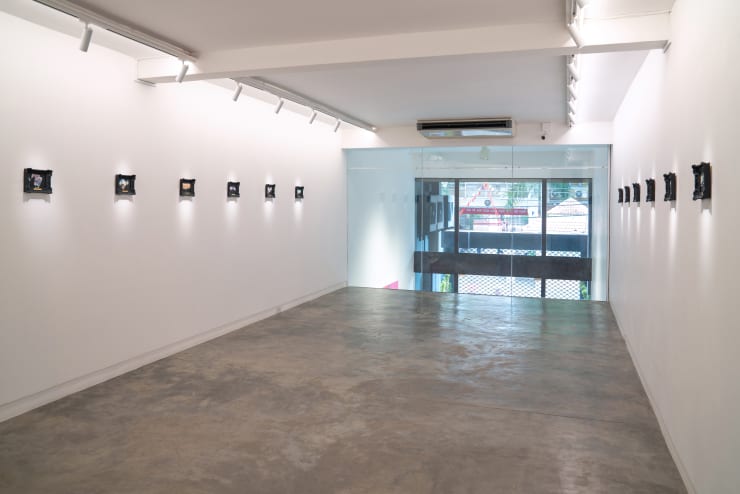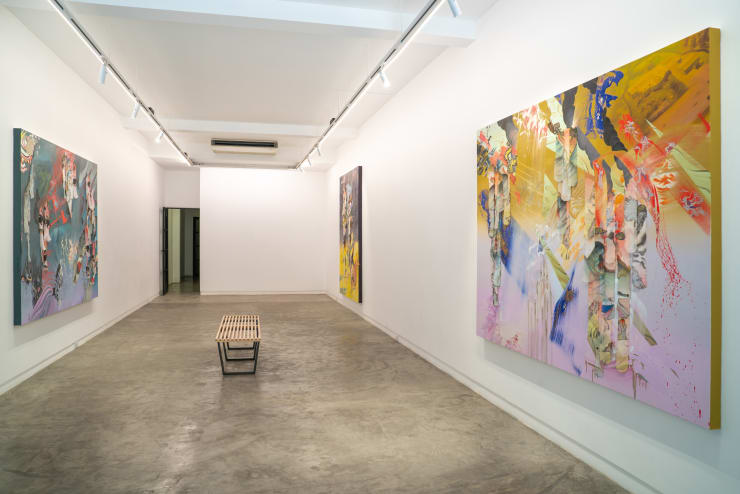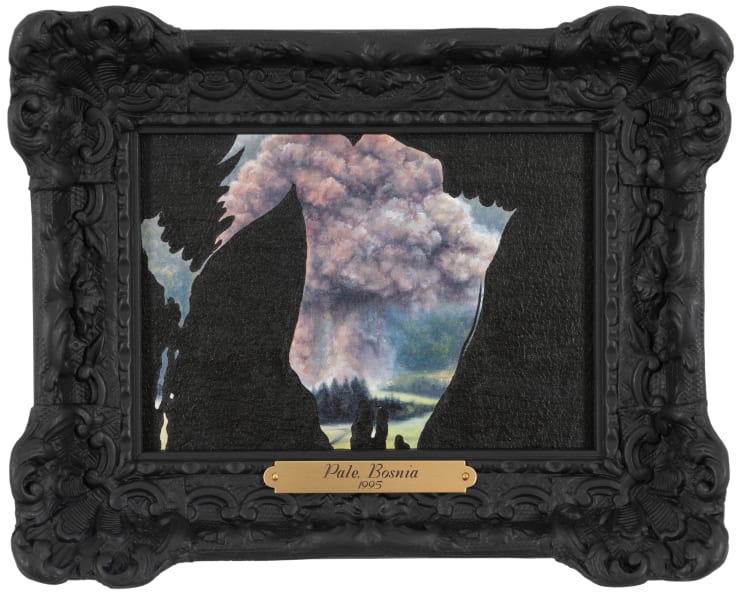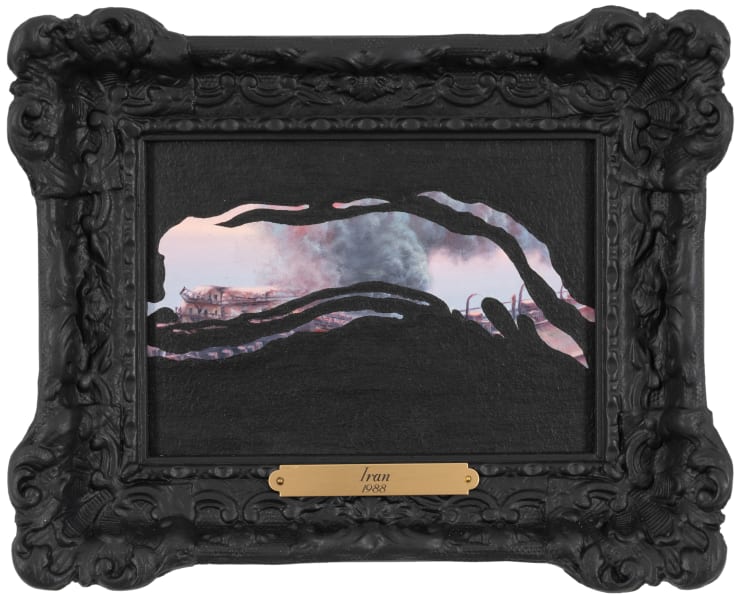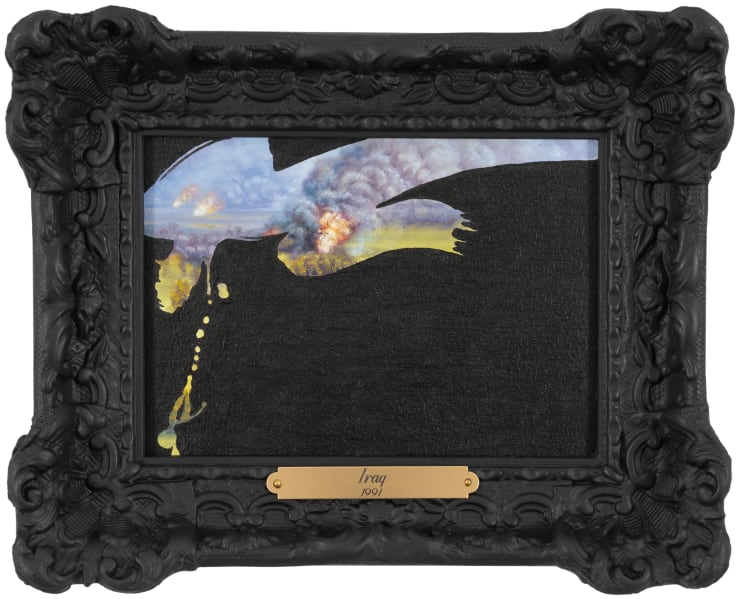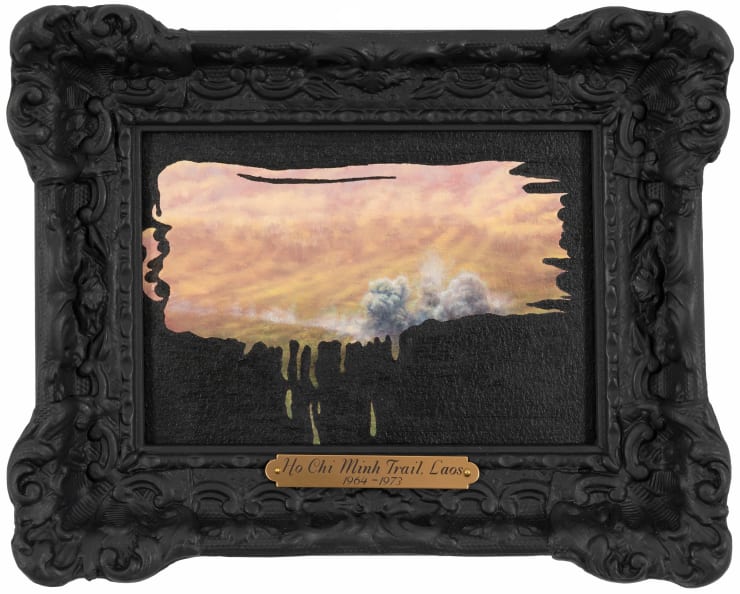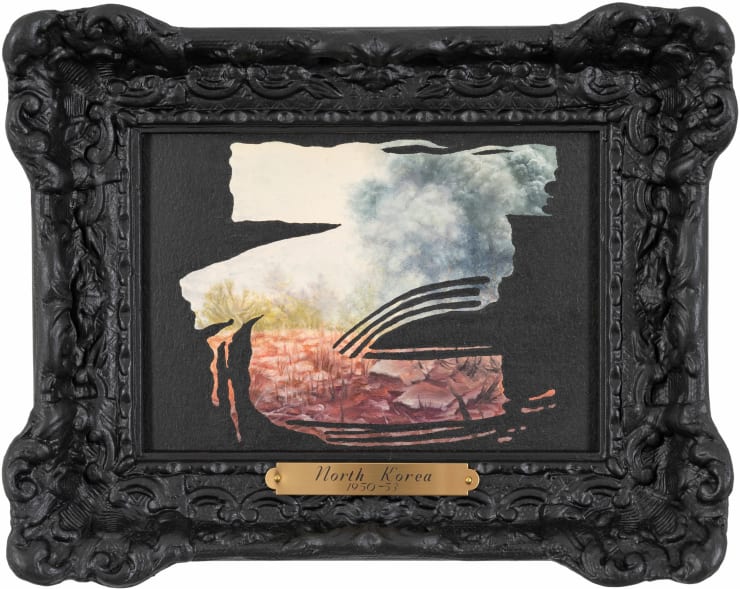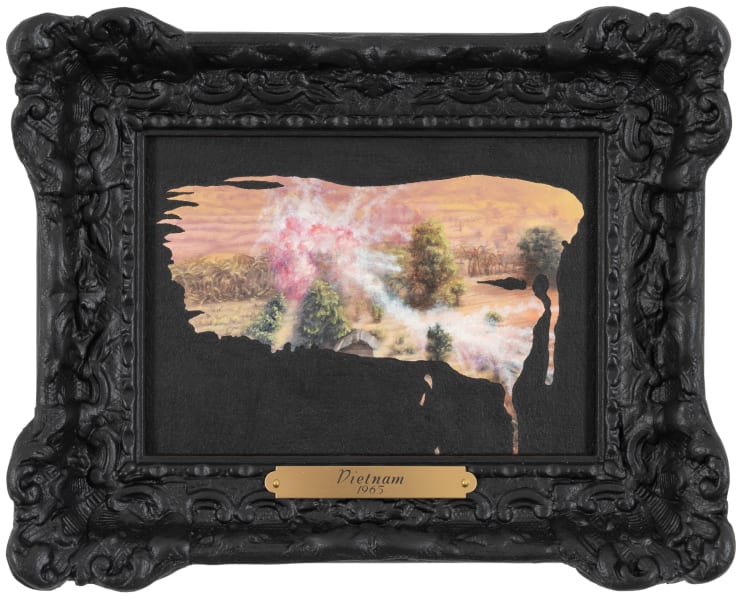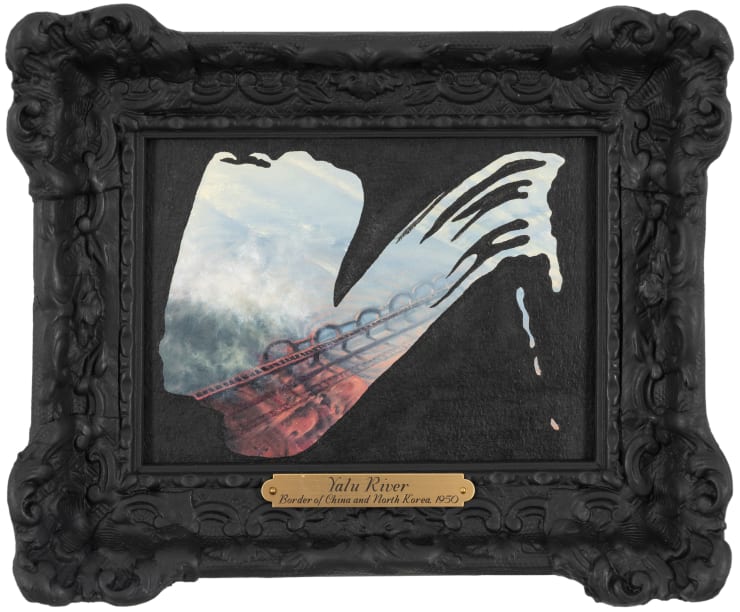Mutiny in the Garden: Lien Truong
Past exhibition
Overview
Galerie Quynh is pleased to present an exhibition of new paintings by Lien Truong titled Mutiny in the Garden, the artist’s third solo show at the gallery. Born in Vietnam and based in the US, Truong employs a rich pastiche of styles uniquely her own as she explores the cultural dynamics of domination, assimilation, and resistance throughout history.
The show takes its title from a new body of work inspired by The Course of Empire by the Hudson River School painter Thomas Cole. Despite Cole’s opposition to Manifest Destiny during a time of rampant genocide against the Native Americans, the romanticized landscapes produced by the Hudson River School ultimately fed the public desire for westward expansion, evincing the disturbing ease with which art can be yoked to the ends of empire – a phenomenon also evidenced by Abstract Expressionism, which was collected and promoted by the CIA for propaganda purposes during the Cold War.
Critically borrowing from the aforementioned painting movements (and many others), Truong’s Mutiny paintings feature sweeping Ab-Ex brushstrokes juxtaposed with landscapes in the style of Cole, as well as figurative elements inspired by Japanese war prints, which the artist paints on silk and then attaches to the canvas. The backgrounds are divided by a two-color gradient, generating a hybrid space between the horizon line in western painting and the void in Asian art. Asian style wave motifs allude to imperialism and immigration, while elsewhere Truong reproduces textile patterns from around the globe, carefully selected for their embedded histories of exclusion or assimilation, as well as for their contemporaneity to specific incidents referenced in the paintings.
Tattered fragments of the Confederate flag flutter in the titular work Mutiny in the Garden, alongside French, American, and African textile patterns and a view of The Great Dismal Swamp — a place of refuge for escaped slaves in the lead up to the American Civil War. In the painting The Peril of Angel’s Breath, textiles from Japan and Vietnam intersect with an image of the Manzanar internment camp for Japanese Americans during World War II as a mushroom cloud billows overhead. Such references to narratives of resistance and protest are prevalent throughout the Mutiny paintings. One thinks of the iconic civil rights figure Fred Korematsu, who fought the legality of Japanese internment taking his case all the way to the Supreme Court. Truong inverts the gaze of power and turns History Painting on its head; an inversion reflected in the background color gradients, wherein the dark tones appear above the “horizon” and light tones appear below, as is rarely the case in western landscape paintings.
The exhibition also features a new series of miniature oil paintings titled Translatio Imperii, denoting the divine right of kings to rule in succession. Disrupting the white male-dominated lineage of painters who make up the canon of modern art, Truong appropriates the faux abstract expressionist brushstrokes of Roy Lichtenstein, turning them into windows looking onto what appear to be bucolic landscapes, which upon closer inspection reveal themselves to be war zones, painted in a manner reminiscent of the Hudson River School and pockmarked with craters from American bombing campaigns.
Mounted in ornate black frames, each piece is fitted with a brass plaque bearing the bombed country’s name and the year of the bombings. The matte black from the frame spills onto the canvas, consuming it almost completely; only the “brushstroke” of the “heroic artist” pierces through the veil of darkness to reveal traces of violence on the other side. Exemplifying the concept of heterotopia as defined by Foucault, Truong’s work constitutes a space in which contradiction and otherness can exist. Acknowledging the conflicts and fault lines that run throughout our post-modern society, she nevertheless continues to trace vectors of escape and redemption.
Installation Views
Works
-
 Lien Truong, Mutiny in the Garden, 2018
Lien Truong, Mutiny in the Garden, 2018 -
 Lien Truong, The Peril of Angel’s Breath, 2018
Lien Truong, The Peril of Angel’s Breath, 2018 -
 Lien Truong, That Mimetic Waltz of the Moirai, 2018
Lien Truong, That Mimetic Waltz of the Moirai, 2018 -
 Lien Truong, Deliverance, 2018
Lien Truong, Deliverance, 2018 -
 Lien Truong, That space between sky and water, 2018
Lien Truong, That space between sky and water, 2018 -
 Lien Truong, The Procession, 2018
Lien Truong, The Procession, 2018 -
 Lien Truong, Flight, 2018
Lien Truong, Flight, 2018 -
 Lien Truong, Pale, Bosnia, 1995, 2018
Lien Truong, Pale, Bosnia, 1995, 2018 -
 Lien Truong, Cambodia, 1973, 2017
Lien Truong, Cambodia, 1973, 2017 -
 Lien Truong, Grenada, 1983, 2018
Lien Truong, Grenada, 1983, 2018 -
 Lien Truong, Guatemala, 1960s, 2017
Lien Truong, Guatemala, 1960s, 2017 -
 Lien Truong, Iran, 1988, 2018
Lien Truong, Iran, 1988, 2018 -
 Lien Truong, Iraq, 1991, 2018
Lien Truong, Iraq, 1991, 2018 -
 Lien Truong, Ho Chi Minh Trail, Laos, 1964 - 1973, 2018
Lien Truong, Ho Chi Minh Trail, Laos, 1964 - 1973, 2018 -
 Lien Truong, North Korea, 1950 - 53, 2017
Lien Truong, North Korea, 1950 - 53, 2017 -
 Lien Truong, North Korea, 1950, 2017
Lien Truong, North Korea, 1950, 2017 -
 Lien Truong, Syria, 2016, 2018
Lien Truong, Syria, 2016, 2018 -
 Lien Truong, Vietnam, 1965, 2017
Lien Truong, Vietnam, 1965, 2017 -
 Lien Truong, Yalu River, 1950, 2018
Lien Truong, Yalu River, 1950, 2018


